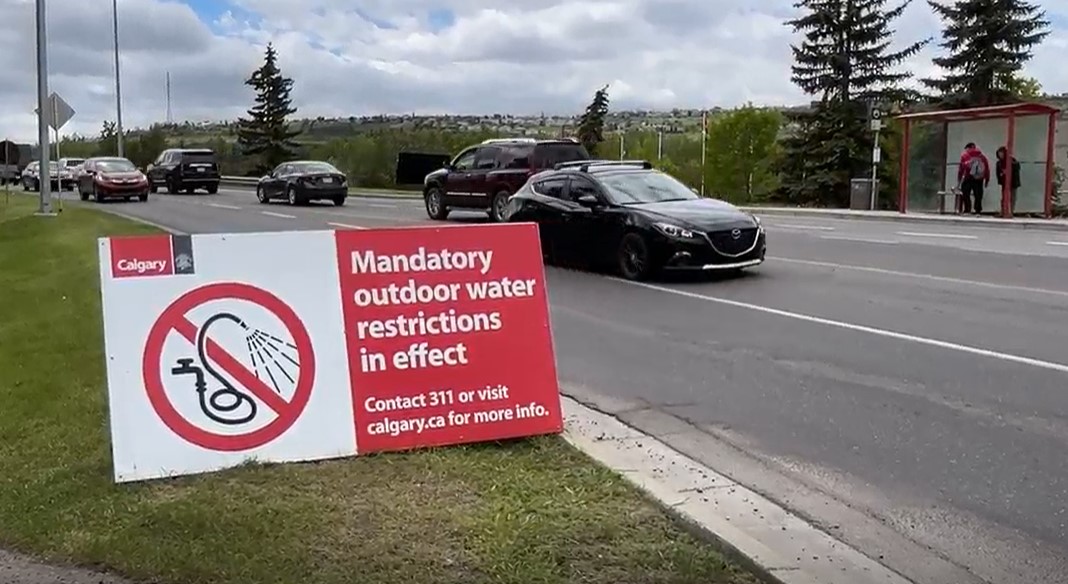
Saturday marks the third day of water restrictions in Calgary, and Bowness residents are getting creative when it comes to preserving water.
This comes as city crews are working all hours to repair a critical water main break near Bowness that has led to city-wide water restrictions and a boil water advisory for the area.
As of Saturday, they have dug down to the feedermain and have started repairs, including cutting out the section of the damaged pipe to replace it with new piping.
In the meantime, when it comes to preserving water in Bowness, one couple CityNews spoke with says they filled up jugs from this river.
“We’re following the water restriction on no outdoor water but we still have plant pots and I don’t want to lose the flowers I have invested in, so we are just pulling water out of the river — which is not treated water, but we can use to water outdoor plants,” they said.
Another resorted to showering with water bottles.
“Took a shower this morning and I used three bottles of water that I heated in the kettle,” they said. “The city is going to take care of us, I’m sure of that.”
Day three saw the City of Calgary provide an update on the city’s water usage, with officials saying Calgarians dropped their use by 25 per cent overnight, and water supply is keeping up with demand.
As a result, Calgarians could see the issue resolved in a week at most as the pipe gets repaired.
Watch: Repairs to Calgary water main break to take at least a week
Chris Huston, the manager of drinking water distribution for Calgary, said in a Saturday update that the feeder main break was unusual.
He says they experience 300 main breaks in a year but one coming from a feeder main at this scale was unexpected
“We don’t have a crystal ball to see what’s going to happen. But this one caught us off guard, we weren’t expecting something like this to happen,” Huston said.
“Pipes can last up to 100 years, we have pipes in our system that are from 1910 that are still in good shape. So we would have expected this pipe to last a lot longer. So we wouldn’t be expecting this to happen when it happened.”
With the pipe being placed in the 1970s, Tim Haney, a crisis expert and sociology professor from Mount Royal University, says vulnerabilities can develop as a city grows.
“This feeder mane had potential vulnerabilities prior but work had been done in April that was supposed to fix it,” he told CityNews.
“But when you have a city as large as we do and a growing one you have a lot of potential vulnerabilities,”
Calgary had the largest population growth among Canada’s largest cities in 2023, now totalling nearly 1.7 million, according to Statistics Canada.
Related Stories:
As the population grows, Haney says the city needs to invest more in its water and sewage infrastructure to avoid crises like these from happening again.
“Are we going to be able to keep up? Do we have the tax base? Do we have the funding to be able to scale up this infrastructure quickly enough to keep up with it,” he said.
“And if we don’t, my fear is we will see more instances like this in the future.”
The city is asking residents to limit their shower times and avoid using excess water for baths and dishwashing as a way to preserve water, but Haney says these are things Calgarians should be doing anyway.
“Not running our dishwasher or washing machine unless they are fully loaded, not letting water run the entire time that you are doing dishes well we should be doing this anyway — especially in a region that is predicted to have even more water stress than we do now,” he said.
Haney says we can never predict a crisis but making these efforts can help us mitigate risk.
The city’s drought condition was downgraded to “normal” in late May, while the rest of the province continues to deal with drought conditions.